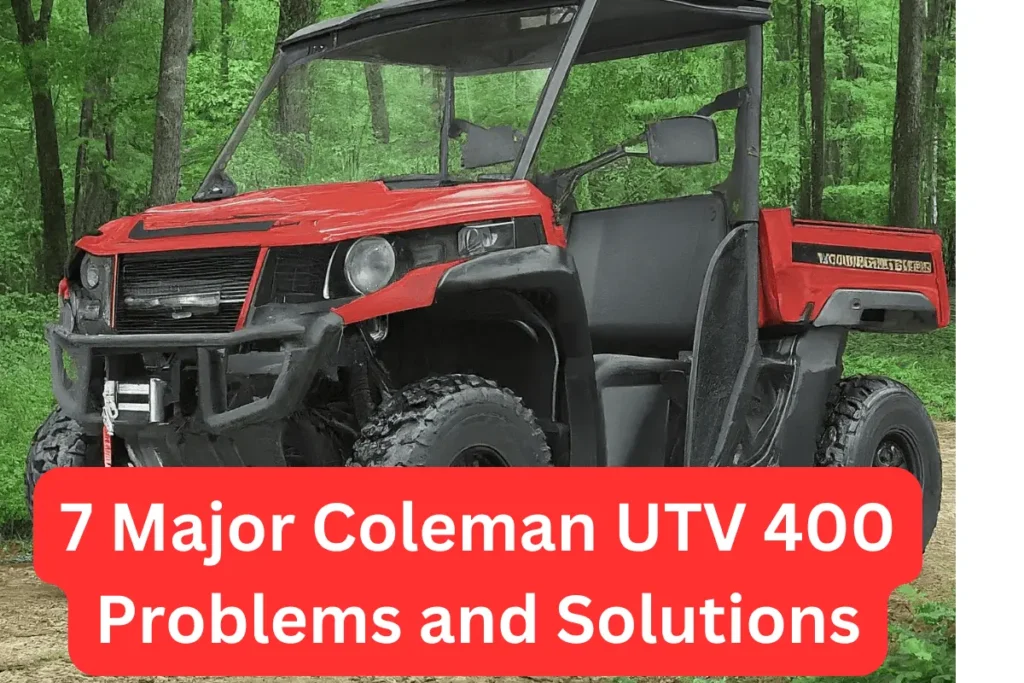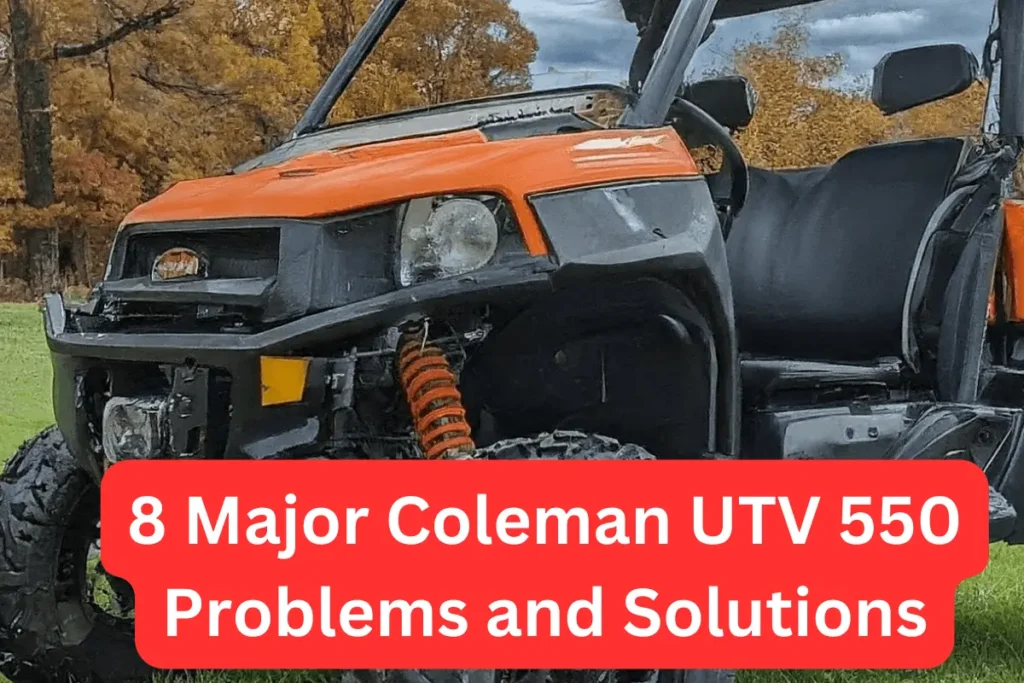The CFMoto Uforce 1000 is a popular utility side-by-side vehicle with exceptional power and versatility. However, like any machine, it is not without its share of problems. In this article, we will discuss 13 major CFMoto Uforce 1000 problems and provide solutions to help you overcome them.
The most common problems of CFMoto Uforce 1000 are transmission issues, belt problems, shifting issues, engine overheating, clutch problems, throttle problems, engine not starting , jerky acceleration, PTO issues, steering problems and engine misfires.
13 Major CFMoto Uforce 1000 problems and Solutions
Now we are going to discuss the major issues of Cfmoto 1000 along with their easy solutions.
1. Cfmoto Uforce 1000 Transmission problems
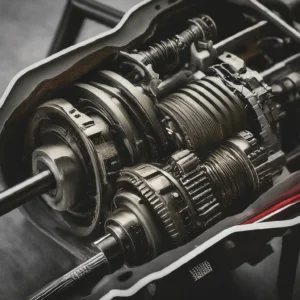
You may find yourself facing transmission problems with your CFMoto UForce 1000, which can disrupt your off-road adventures. Let’s take a closer look at some common transmission issues and how you can address them effectively.
- Difficulty Shifting Gears: One of the most prevalent transmission problems is difficulty shifting gears. You might notice resistance or slipping when trying to change gears, making it challenging to maintain control of your vehicle. This issue can stem from various factors, such as low or contaminated transmission fluid, worn-out clutch components, mechanical faults within the transmission, or problems with gear linkage or shift cables.
- Low or Contaminated Transmission Fluid: Transmission fluid plays a vital role in lubricating and cooling the transmission system. If the fluid level is low or contaminated with debris, it can lead to increased friction, overheating, and rough shifting. To prevent these problems, make sure to regularly check and change the transmission fluid according to the manufacturer’s instructions.
- Clutch Problems: The clutch is essential for smoothly engaging and disengaging gears in manual transmission vehicles like the UForce 1000. If the clutch components, such as clutch plates or springs, wear out or become misaligned, it can result in difficulty shifting gears or clutch slippage. Proper adjustment and timely replacement of worn-out clutch parts are essential to maintain optimal transmission performance.
- Mechanical Faults: Inside the transmission, there are intricate components like gears, shift forks, and synchronizers that facilitate gear changes. Over time, these parts can wear out due to normal usage, improper maintenance, or manufacturing defects. If you encounter mechanical faults within the transmission, seeking assistance from a qualified mechanic familiar with CFMoto vehicles is advisable to diagnose and address the issue effectively.
- Gear Linkage or Shift Cable Issues: The gear linkage and shift cables are responsible for transmitting your gear selection inputs to the transmission mechanism. If these components become worn, misaligned, or damaged, it can result in difficulty shifting gears or a notchy gear shift feel. Inspecting and, if necessary, adjusting or replacing the gear linkage and shift cables can help resolve these problems.
If you’re experiencing transmission problems with your CFMoto UForce 1000, here’s what you can do:
- Regular Maintenance: Stay on top of your vehicle’s maintenance schedule by checking fluids, including transmission fluid, and performing regular tune-ups as recommended by the manufacturer.
- Diagnostic Inspection: Take the time to inspect your transmission system carefully to identify any visible issues or signs of wear. This can help you pinpoint the root cause of the problem before seeking professional assistance.
- Professional Assistance: If you’re unable to diagnose or fix the transmission issue on your own, don’t hesitate to consult a qualified mechanic or authorized service center specializing in CFMoto vehicles. They can provide expert diagnosis and repair services to get your UForce 1000 back in optimal working condition.
2. Cfmoto Uforce 1000 Belt problems
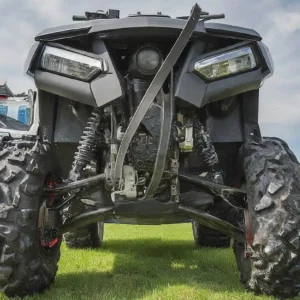
You rely on your CFMoto UForce 1000 to navigate rugged terrains and conquer challenging trails. But what happens when you encounter belt problems? Let’s explore these issues in detail.
You may find yourself facing belt problems with your CFMoto UForce 1000, which can disrupt your off-road adventures and compromise your vehicle’s performance. Belt issues can manifest in various ways, from slipping and squealing to complete belt failure.
Here’s what you need to know about CFMoto UForce 1000 belt problems:
- Belt Slipping: One common issue is belt slipping, where the belt fails to maintain proper traction with the pulleys. This can result in a loss of power transmission and sluggish acceleration. Belt slipping may occur due to improper belt tension, worn-out belt components, or contaminants on the belt surface.
- Squealing Noise: If you hear a squealing noise coming from the belt area when accelerating or decelerating, it could indicate belt misalignment or wear. Misaligned belts can rub against other components, leading to friction and noise. Additionally, worn-out or damaged belt components may produce squealing sounds during operation.
- Belt Wear and Tear: Over time, the belt on your CFMoto UForce 1000 can experience wear and tear due to regular use and exposure to harsh conditions. This wear can manifest as fraying, cracking, or glazing on the belt surface. Belt wear compromises its integrity and may eventually lead to belt failure if not addressed promptly.
- Belt Failure: In severe cases, belt problems can escalate to belt failure, where the belt snaps or breaks while in operation. Belt failure can occur due to prolonged wear, excessive stress on the belt, or sudden impacts or debris encountered during off-road riding. A broken belt immobilizes the vehicle and necessitates immediate replacement to restore functionality.
Now, let’s explore some steps you can take to address CFMoto UForce 1000 belt problems:
- Inspect Belt Regularly: Routinely inspect the belt’s condition for signs of wear, damage, or misalignment. Look for fraying, cracking, or glazing on the belt surface, and verify proper alignment with the pulleys.
- Maintain Proper Belt Tension: Adjust the belt tension according to the manufacturer’s recommendations to prevent slipping and ensure optimal performance. Over-tightening or under-tightening the belt can lead to premature wear and belt problems.
- Clean and Lubricate Components: Keep the belt and pulleys clean from debris, dirt, and contaminants that could affect belt performance. Lubricate moving parts as recommended to minimize friction and wear on the belt.
- Replace Worn-Out Components: If you notice signs of wear or damage on the belt or related components, such as pulleys or tensioners, replace them promptly to prevent further issues and ensure reliable operation.
- Seek Professional Assistance: If you encounter persistent belt problems or experience belt failure, consult a qualified mechanic or authorized service center specializing in CFMoto vehicles. They can diagnose the issue accurately and perform necessary repairs or replacements to restore your vehicle’s functionality.
Also read CFMOTO ZFORCE 800 Trail Problems
3. Cfmoto Uforce 1000 Clutch problems
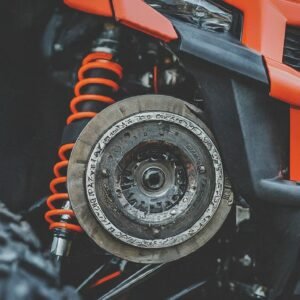
You might encounter clutch problems with your CFMoto UForce 1000, and understanding the root causes can help you address them effectively.
The clutch in your UForce 1000 is a vital component, responsible for engaging and disengaging the power from the engine to the transmission. When it’s not functioning properly, shifting gears can become challenging, affecting your vehicle’s performance and your overall riding experience.
Here are some common clutch problems you might encounter:
- Worn-Out Clutch Plates: Over time, the clutch plates in your UForce 1000 can wear down due to friction and heat generated during operation. This wear and tear can lead to slipping, making it difficult to shift gears smoothly.
- Loose or Broken Clutch Cable: The clutch cable is what connects the clutch lever to the clutch assembly. If it becomes loose or breaks, you may experience issues with engaging and disengaging the clutch, resulting in difficulty shifting gears.
- Improper Clutch Adjustment: The clutch needs to be properly adjusted to verify it engages and disengages at the right time. If it’s not adjusted correctly, you may encounter problems such as clutch slippage or difficulty engaging gears.
- Worn-Out Clutch Springs: The clutch springs play a crucial role in applying pressure to the clutch plates. If these springs become worn out or lose their tension, it can affect the clutch’s ability to engage properly, leading to shifting difficulties.
Addressing clutch problems in your CFMoto UForce 1000:
- Inspect the Clutch System: Start by examining the clutch components, including the clutch plates, cable, and springs, for any signs of wear or damage.
- Adjust the Clutch: If the clutch cable is loose or improperly adjusted, you can adjust it according to the manufacturer’s specifications to ensure proper engagement.
- Replace Worn-Out Parts: If you notice any worn-out or damaged clutch components, such as clutch plates or springs, replace them with new ones to restore optimal clutch performance.
- Seek Professional Help: If you’re unsure about diagnosing or fixing clutch problems, don’t hesitate to seek assistance from a qualified mechanic or CFMoto dealership. They can accurately diagnose the issue and perform necessary repairs or replacements.
By addressing clutch problems promptly and effectively, you can ensure smooth gear transitions and optimal performance from your CFMoto UForce 1000, enhancing your off-road adventures.
Also explore the Cfmoto Uforce 600 problems
4. Cf moto Uforce 1000 Shifting problems
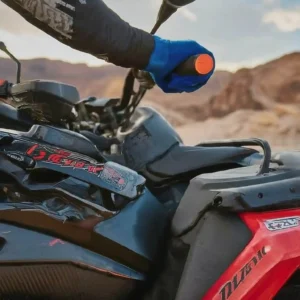
You might encounter shifting problems with your CFMoto UForce 1000, making it challenging to transition between gears smoothly. This issue can disrupt your riding experience and compromise your vehicle control.
Here’s a closer look at what might be cause of the Cfmoto Uforce 1000 hard shift issue:
- Transmission Fluid Issues: If the transmission fluid is low or contaminated, it can lead to friction and difficulty shifting gears. Make sure you regularly check and replace the transmission fluid according to the manufacturer’s recommendations to prevent this problem.
- Clutch Troubles: The clutch is essential for changing gears in manual vehicles like the UForce 1000. Worn-out clutch components, such as clutch plates or springs, can result in difficulty shifting or slipping gears. Keep the clutch properly adjusted and replace worn-out parts as needed.
- Mechanical Faults: Inside the transmission, various components like gears and shift forks can wear out over time or become damaged. This can occur due to extensive use, inadequate maintenance, or manufacturing defects. If there’s a problem with these parts, seeking professional assistance may be necessary.
- Gear Linkage or Shift Cable Problems: The gear linkage and shift cable facilitate gear changes, but they can also wear out. This wear and tear can make shifting feel abnormal or difficult. Adjusting or replacing these parts can often resolve the issue.
Here’s what you can do to address shifting problems with your CFMoto UForce 1000:
- Stay on Top of Maintenance: Adhere to the manufacturer’s maintenance recommendations, including regular fluid checks and tune-ups.
- Diagnose the Issue: Take a thorough look at your transmission to identify the root cause of the shifting problem. Sometimes, it may be a simple fix that you can handle yourself.
- Seek Professional Help: If you’re uncertain about the issue or unable to resolve it independently, don’t hesitate to consult a mechanic familiar with CFMoto vehicles. They can diagnose the problem accurately and restore proper functionality to your transmission.
Also explore Cfmoto Uforce 800 Problems
5. Cfmoto Uforce 1000 Throttle Problems
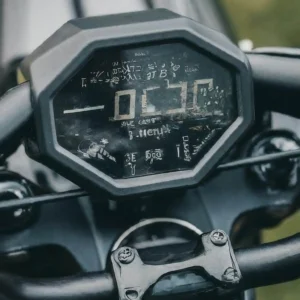
You may face throttle problems with your CFMoto UForce 1000, causing frustration and hindering your off-road experience. The throttle is essential for controlling your vehicle’s speed and acceleration, so any issues with it can significantly impact performance and safety.
Here are some common throttle problems you might encounter and how to address them:
Poor Throttle Response: When you press the gas pedal, you expect an immediate and smooth response from the engine. However, if you notice a delay or unresponsiveness, it could indicate poor throttle response. This can make it challenging to accelerate when needed, especially during off-road maneuvers.
- Causes: Poor throttle response can stem from various factors, such as a clogged air filter restricting airflow to the engine, fuel delivery issues due to a faulty fuel pump or fuel pressure regulator, malfunctioning throttle position sensor (TPS), intake system leaks, dirty or faulty fuel injectors, or problems with the engine control unit (ECU).
- Solutions: Start by checking the air filter for any clogs and clean or replace it if necessary. Test the fuel pressure to verify it’s within the manufacturer’s limits, and replace components like the fuel pump or injectors if needed. Inspect the throttle position sensor for proper functioning and replace it if readings are off. Look for any leaks in the intake system and repair them. Clean or replace dirty or faulty fuel injectors. Finally, check the ECU for error codes and address them accordingly.
Sticky Throttle: A sticky throttle occurs when the throttle pedal doesn’t return to its resting position smoothly after releasing pressure. This can cause uneven acceleration or difficulty maintaining a consistent speed, posing safety risks, especially during challenging terrain navigation.
- Causes: Sticky throttles can result from a buildup of dirt or debris around the throttle pedal mechanism, worn throttle cables, or problems with the throttle body assembly.
- Solutions: Thoroughly clean the throttle pedal mechanism to remove any dirt or debris that may be causing sticking. Lubricate the throttle cable and ensure it moves freely without any resistance. Inspect the throttle body assembly for any signs of wear or damage and replace it if necessary.
Uneven Throttle Response: Uneven throttle response refers to fluctuations in engine speed or power output, even when maintaining a steady throttle position. This can make it challenging to control your vehicle’s speed and can indicate underlying issues with fuel delivery or engine performance.
- Causes: Uneven throttle response can be caused by fuel system problems, such as a clogged fuel filter, inadequate fuel pressure, or a malfunctioning fuel injector. Additionally, issues with the ignition system, such as faulty spark plugs or ignition coils, can also contribute to uneven throttle response.
- Solutions: Start by checking the fuel filter for any clogs and replace it if necessary. Test the fuel pressure to ensure it meets the manufacturer’s specifications, and replace the fuel pump or pressure regulator if needed. Inspect the fuel injectors for signs of dirt or damage, and clean or replace them as necessary. Additionally, check the ignition system components, such as spark plugs and ignition coils, and replace any faulty parts.
Throttle Sticking in Cold Weather: In cold weather conditions, you may encounter issues with the throttle sticking or becoming less responsive. This can make it challenging to accelerate smoothly, especially when starting your vehicle in cold temperatures.
- Causes: Throttle sticking in cold weather can be caused by a variety of factors, including frozen throttle cables, moisture buildup in the throttle body assembly, or problems with the electronic throttle control system.
- Solutions: Thaw frozen throttle cables by applying a gentle heat source, such as a hairdryer or warm water, to the affected area. Ensure that the throttle body assembly is clean and free of moisture buildup, and use a throttle body cleaner to remove any contaminants. If the issue persists, consult a mechanic to inspect the electronic throttle control system for any faults or malfunctions.
6. Engine overheating

You might have noticed that your CFMoto UForce 1000’s engine is overheating, causing concern during your rides. This issue can be frustrating and potentially harmful to your vehicle if not addressed promptly. Let’s delve into the details of engine overheating problems with the CFMoto UForce 1000:
Causes of Overheating: Several factors can contribute to engine overheating in the CFMoto UForce 1000:
- Low Coolant Levels: Insufficient coolant levels in the radiator can lead to inadequate cooling of the engine, resulting in overheating.
- Coolant Leaks: Leaks in the cooling system, such as from hoses, connections, or the radiator itself, can cause a loss of coolant and subsequent overheating.
- Faulty Thermostat: A malfunctioning thermostat may fail to regulate coolant flow properly, leading to overheating issues.
- Clogged Radiator: Accumulation of dirt, debris, or mineral deposits in the radiator can obstruct airflow and hinder effective heat dissipation, resulting in engine overheating.
- Faulty Water Pump: A malfunctioning water pump may fail to circulate coolant efficiently through the engine, contributing to overheating problems.
Symptoms of Engine Overheating: Recognizing the signs of engine overheating is crucial for timely intervention and prevention of damage to the CFMoto UForce 1000:
- Elevated Temperature Gauge: Monitoring the temperature gauge on the instrument panel can indicate if the engine is running hotter than normal.
- Steam or Smoke from the Engine Compartment: Visible steam or smoke emanating from the engine compartment is a clear indication of overheating.
- Engine Misfires or Reduced Performance: Overheating can cause engine misfires, reduced power output, or even engine stalling.
- Pinging or Knocking Sounds: Excessive heat can lead to pre-ignition or detonation, resulting in pinging or knocking noises from the engine.
Preventive Measures and Solutions: Addressing engine overheating in the CFMoto UForce 1000 requires proactive measures and appropriate solutions:
- Maintain Proper Coolant Levels: Regularly check coolant levels and top up as necessary to ensure adequate engine cooling.
- Inspect and Repair Coolant Leaks: Routinely inspect the cooling system for leaks and promptly repair any identified issues to prevent coolant loss and overheating.
- Replace Faulty Thermostat: If the thermostat is suspected to be faulty, replace it with a new one to restore proper coolant flow regulation.
- Clean or Replace Radiator: Periodically clean the radiator to remove debris and obstructions, or replace it if it is severely clogged or damaged.
- Check Water Pump Functionality: Ensure the water pump is functioning correctly by inspecting for leaks or signs of wear, and replacing if necessary.
7. Engine Not Starting
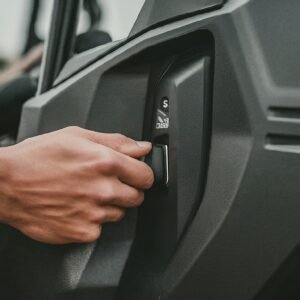
You’re geared up for an exciting ride with your CFMoto UForce 1000, but suddenly, you hit a roadblock – the engine won’t start. It’s a frustrating situation, but don’t worry, because you’re not alone. Many UForce 1000 owners encounter this issue at some point, and understanding the potential causes can help you get back on track.
Here’s what might be causing your engine not to start:
- Insufficient Fuel: Before you dive into more complex issues, start with the basics. Check your fuel gauge to ensure there’s enough gas in the tank. If it’s running low, fill it up with the appropriate fuel.
- Battery Problems: A dead or malfunctioning battery can also prevent your engine from starting. Check to make sure the battery is fully charged and in good condition. If it’s not holding a charge, try jump-starting it with another vehicle or replacing it altogether.
- Faulty Spark Plug: The spark plug plays a crucial role in igniting the fuel-air mixture in the engine cylinder. If the spark plug is worn out or damaged, it can prevent the engine from starting. Inspect the spark plug for signs of damage, and replace it if necessary.
- Ignition System Failure: The ignition system, including the switch, wiring, and starter motor, is responsible for initiating the engine’s combustion process. If any component of the ignition system fails, your engine may not start. Check these components for damage or wear and replace them as needed.
- Carburetor or Fuel Injection Issues: Problems with the carburetor or fuel injection system can also prevent the engine from starting. Look for clogs, leaks, or other issues in the carburetor or fuel injection system, and clean or repair any problems you find.
To troubleshoot and resolve the issue of your CFMoto UForce 1000’s engine not starting, follow these steps:
- Check Fuel Level: Ensure there’s enough fuel in the tank to power the engine.
- Inspect Battery: Test the battery to verify its condition and charge level. Replace it if necessary.
- Examine Spark Plug: Check the spark plug for wear and tear, and replace it if needed.
- Inspect Ignition System: Look for any damage or faults in the ignition system components and repair or replace them accordingly.
- Check Carburetor/Fuel Injection System: Clean or repair any issues with the carburetor or fuel injection system.
8. Jerky Acceleration
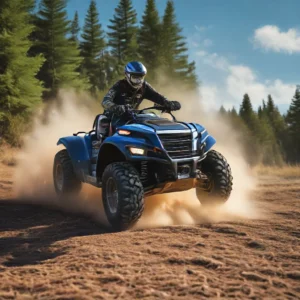
There are several factors that can contribute to jerky acceleration in a CFMoto UForce 1000. Understanding these causes will help you diagnose the issue and find an appropriate solution.
- Fuel System Problems: One possible cause of jerky acceleration is a problem with the fuel system. This could be due to clogged fuel injectors, a dirty fuel filter, or a malfunctioning fuel pump. These issues can disrupt the fuel flow and result in inconsistent acceleration.
- Ignition System Issues: Another potential cause is a problem with the ignition system. Faulty spark plugs, ignition coils, or a malfunctioning ignition control module can lead to misfires and jerky acceleration.
- Transmission Problems: A malfunctioning transmission can also cause jerky acceleration. Issues such as low transmission fluid, worn-out clutch plates, or a faulty torque converter can disrupt the smooth transfer of power from the engine to the wheels.
Solutions to Jerky Acceleration
- Fuel System Maintenance: Start by inspecting and cleaning the fuel injectors to ensure proper fuel flow. Additionally, replace the fuel filter if it’s dirty or clogged. If you suspect a problem with the fuel pump, have it checked by a professional and replace it if necessary.
- Ignition System Inspection: Regularly inspect the spark plugs and ignition coils for signs of wear or damage. If any issues are detected, replace them with high-quality parts recommended by CFMoto. It’s also a good idea to check the ignition control module for any faults and have it repaired or replaced as needed.
- Transmission Maintenance: Make sure that the transmission fluid is at the correct level and replace it if it’s dirty or contaminated. If you suspect clutch plate wear or torque converter issues, consult a professional technician who specializes in CFMoto vehicles. They can identify the issue and suggest the right repairs or replacements.
9. Driveline Issues
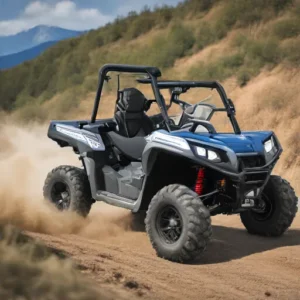
One of the most common driveline issues experienced by CFMOTO UForce 1000 owners is vibration. Vibration can be caused by various factors such as worn-out universal joints, imbalanced driveshafts, or misaligned components. This issue can not only lead to discomfort for the occupants but also indicate potential damage to driveline components.
Another prevalent issue is noise coming from the driveline. Unusual sounds such as clunking, whining, or grinding may indicate problems with the differential, axle shafts, or other driveline elements. Ignoring such noises can lead to further damage and costly repairs down the line.
Additionally, driveline leaks can occur, leading to a loss of lubrication and potential damage to driveline components. It is essential to address any leaks promptly to prevent long-term damage to the driveline system.
Addressing Driveline Issues
When faced with driveline issues in my CFMOTO UForce 1000, I prioritize regular maintenance and inspections. This includes checking the universal joints, driveshafts, differential, and other driveline components for wear and tear. Timely replacement of worn-out parts can prevent more extensive damage to the driveline system.
Furthermore, ensuring proper lubrication of the driveline components is crucial in preventing premature wear and reducing the risk of driveline leaks. Using the recommended lubricants and following the manufacturer’s guidelines for maintenance can significantly extend the lifespan of the driveline.
In cases of driveline vibration, seeking professional assistance to diagnose and rectify the underlying cause is imperative. Whether it involves rebalancing the driveshaft or replacing worn-out components, addressing vibration issues promptly can prevent further damage to the driveline and ensure a smoother driving experience.
When encountering abnormal noises from the driveline, I have learned that it is best to refrain from ignoring them. Consulting a qualified technician to identify and address the source of the noise can prevent potential driveline failures and more extensive repairs in the future.
10. Body and Frame Issues in CFMOTO UForce 1000
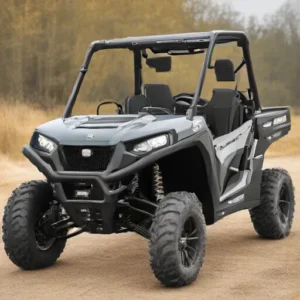
One of the prevalent concerns with the CFMOTO UForce 1000 is the potential for rust and corrosion on the body and frame. This can occur due to exposure to harsh environmental conditions, such as moisture, salt, and debris. Over time, these elements can lead to the deterioration of the metal components, compromising their strength and durability.
Additionally, the frame of the CFMOTO UForce 1000 may be susceptible to structural damage, especially when subjected to heavy loads, rough terrain, or impact from collisions. This can result in misalignment, weakened integrity, and safety hazards for the occupants.
It’s important to note that addressing these issues requires a comprehensive understanding of the vehicle’s construction and the appropriate measures to rectify the specific concerns.
Addressing Body and Frame Issues
When dealing with body and frame issues in the CFMOTO UForce 1000, it’s crucial to take a proactive approach to maintenance and repairs. Here are some essential steps to address these concerns:
Regular Inspections
Perform routine inspections of the body and frame to identify any signs of rust, corrosion, or structural damage. Pay close attention to areas that are prone to accumulation of moisture and debris.
Preventative Maintenance
Utilize protective coatings, rust inhibitors, and sealants to safeguard the body and frame from environmental elements. Regular cleaning and application of protective products can significantly extend the lifespan of these components.
Professional Repairs
Seek the expertise of qualified technicians who have experience with CFMOTO UForce 1000 vehicles. Professional repairs and restoration work can address underlying issues effectively and ensure the structural integrity of the body and frame.
Replacement Parts
If the body or frame components are significantly compromised, consider using genuine replacement parts that adhere to the manufacturer’s specifications. This is essential for maintaining the original structural integrity and safety standards of the vehicle.
Compliance with Safety Standards
Ensure that all repairs and maintenance activities comply with safety standards and regulations. This includes proper welding techniques, use of quality materials, and adherence to recommended procedures for structural repairs.
11. PTO Issues
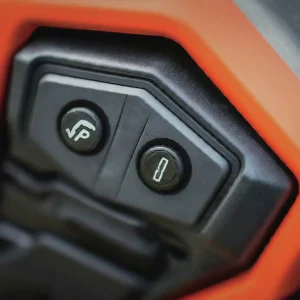
The Power Take-Off (PTO) is a crucial component in utility vehicles like the CFMOTO UFORCE 1000. It is essentially a mechanism that transfers power from the engine to auxiliary equipment, enabling the vehicle to perform a wide array of tasks.
This feature is particularly valuable in utility vehicles used in agriculture, construction, and other heavy-duty applications, where attachments such as mowers, tillers, and sprayers are commonly employed.
Despite its importance, the PTO system in the CFMOTO UFORCE 1000 is not without its issues. Users frequently report several common problems, the foremost being the PTO not engaging. This issue can be incredibly frustrating, as it renders the auxiliary equipment inoperable.
Unusual noises emanating from the PTO system is another frequent complaint, which can be indicative of deeper mechanical problems.
Additionally, users often experience a noticeable loss of power in the PTO, which compromises the efficiency and effectiveness of the attached equipment.
Various factors contribute to these PTO problems. Mechanical wear and tear is a primary cause, especially in vehicles that are used extensively or in harsh conditions. Over time, components such as gears, bearings, and shafts can deteriorate, leading to malfunction.
Electrical issues are another significant factor; faulty wiring or damaged connectors can prevent the PTO from engaging properly or cause intermittent operation. Improper maintenance is also a frequent culprit.
Regular servicing and timely replacement of worn-out parts are essential to ensure the smooth functioning of the PTO system. Neglecting these maintenance practices can accelerate wear and lead to premature failures.
By understanding these common PTO problems and their root causes, users of the CFMOTO UFORCE 1000 can take proactive measures to mitigate these issues.
Solutions
Addressing PTO problems in the CFMOTO UFORCE 1000 requires a systematic approach, beginning with accurate diagnosis and followed by targeted interventions. One common issue is PTO engagement failure.
To troubleshoot, start by checking the PTO switch and wiring connections. Make sure that all electrical connections are secure and free of corrosion. If the switch appears faulty, replacing it with a manufacturer-recommended part is essential.
Another frequent problem is abnormal noises during PTO operation. These noises often indicate worn-out components or insufficient lubrication. Inspect the PTO shaft for any signs of wear or damage, and replace any compromised parts.
Regularly lubricate the PTO shaft using the recommended grease to minimize friction and prevent wear. Keep an ear out for unusual sounds, as early detection can prevent more severe issues.
Routine maintenance is crucial to prevent PTO problems. Establish a regular inspection schedule, checking the PTO system for any signs of wear or damage.
Pay close attention to the condition of belts, bearings, and electrical connections. Replace any worn-out components promptly using parts that meet or exceed the manufacturer’s specifications.
12. Steering Problems

One frequent issue with the CFMoto UForce 1000 is stiff or unresponsive steering. This can often be traced back to the power steering system.
Users have reported that the electronic power steering (EPS) might fail intermittently or become less effective over time.
Another common problem is the alignment of the front wheels, which can cause the vehicle to pull to one side, making steering difficult and potentially hazardous.
Effective Solutions
Addressing these problems involves a few straightforward steps. For power steering issues, the first recommendation is to check the EPS fuse and wiring.
Loose connections or a blown fuse can disrupt the system. If the problem persists, it might be necessary to replace the EPS unit.
For alignment issues, regular inspection and adjustment are crucial. Ensure that tire pressure is consistent and that the front wheels are aligned correctly.
In some cases, professional servicing might be required to recalibrate the steering system.
13. Engine Misfires
Engine misfires in the CFMoto UForce 1000 can stem from various sources. Some of the most common causes include:
- Faulty Spark Plugs: Spark plugs that are worn out or damaged can lead to incomplete combustion, causing a misfire.
- Ignition Coil Issues: Problems with the ignition coil can stop the spark plugs from working properly.
- Fuel System Problems: Clogged fuel injectors or a malfunctioning fuel pump can disrupt the fuel-air mixture, leading to misfires.
- Sensor Malfunctions: Faulty sensors, like the oxygen or mass airflow sensor, can cause incorrect readings and impact engine performance.
Solutions to Address Engine Misfires
Once you know the possible causes, you can fix engine misfires in your CFMoto UForce 1000. Here are some practical solutions:
- Replace Spark Plugs: Regularly inspect and replace spark plugs to ensure they function correctly. This simple maintenance step can prevent many misfire issues.
- Check Ignition Coils: Test the ignition coils and replace any that are not working correctly. This will ensure the spark plugs receive the correct voltage.
- Clean or Replace Fuel Injectors: Ensure the fuel injectors are clean and functioning. Cleaning or replacing them can restore proper fuel flow if they are clogged.
- 4. Inspect Sensors: Regularly check the sensors and replace any faulty ones. Accurate sensor readings are crucial for optimal engine performance.
CFMoto Uforce 1000 top speed
The CFMoto Uforce 1000 has a top speed of around 65 mph. This utility vehicle is designed for both work and play, offering impressive performance and reliability. Whether you’re navigating rugged terrain or cruising on open trails, its speed capabilities ensure you get the job done efficiently and enjoyably.
Conclusion:
As you see here, we discuss the 11 major Cfmoto Uforce 1000 problems and their solutions. By being aware of these common issues and their solutions, you can make sure that your Uforce 1000 continues to perform at its best.
